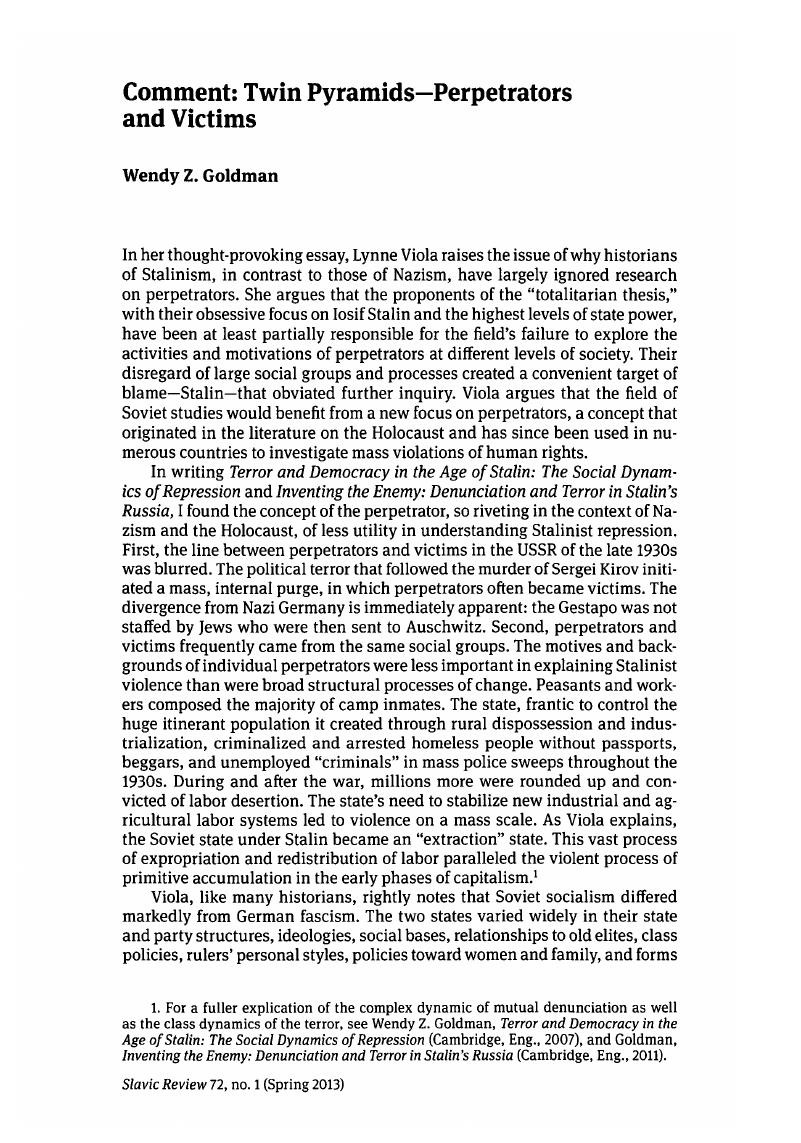No CrossRef data available.
Published online by Cambridge University Press: 20 January 2017

1. For a fuller explication of the complex dynamic of mutual denunciation as well as the class dynamics of the terror, see Goldman, Wendy Z., Terror and Democracy in the Age of Stalin: The Social Dynamics of Repression (Cambridge, Eng., 2007),Google Scholar and Goldman, , Inventing the Enemy: Denunciation and Terror in Stalin's Russia (Cambridge, Eng., 2011).CrossRefGoogle Scholar
2. For the most comprehensive comparison of Stalinism and Nazism, see the essays in Geyer, Michael and Fitzpatrick, Sheila, eds., Beyond Totalitarianism: Stalinism and Nazism Compared (Cambridge, Eng., 2009), 21.Google Scholar
3. Viola, Lynne, The Unknown Gulag: The Lost World ofStalin's Special Settlements (Oxford, 2007).Google Scholar
4. In Sverdlovsk province, for example, the NKVD arrested 4,128 people in the Polish Operation, of which only 390 were Poles. The great majority were former kulaks and their children, most of whom were now workers. See Khaustov, V. N., Naumov, V. P., and Plotnikova, N. S., eds., Lubianka: Stalin i glavnoe upravlenie gosbezopasnosti NKVD 1937-38. Dokumenty (Moscow, 2004), 659 Google Scholar.
5. See comments of various provincial party secretaries at the February-March 1937 Party Plenum, “Materialy Fevral'sko-Martovskogo Plenuma,” Voprosy istorii, 1993, no. 5: 3-5; no. 6: 5-9, 27; no. 7: 3-5.